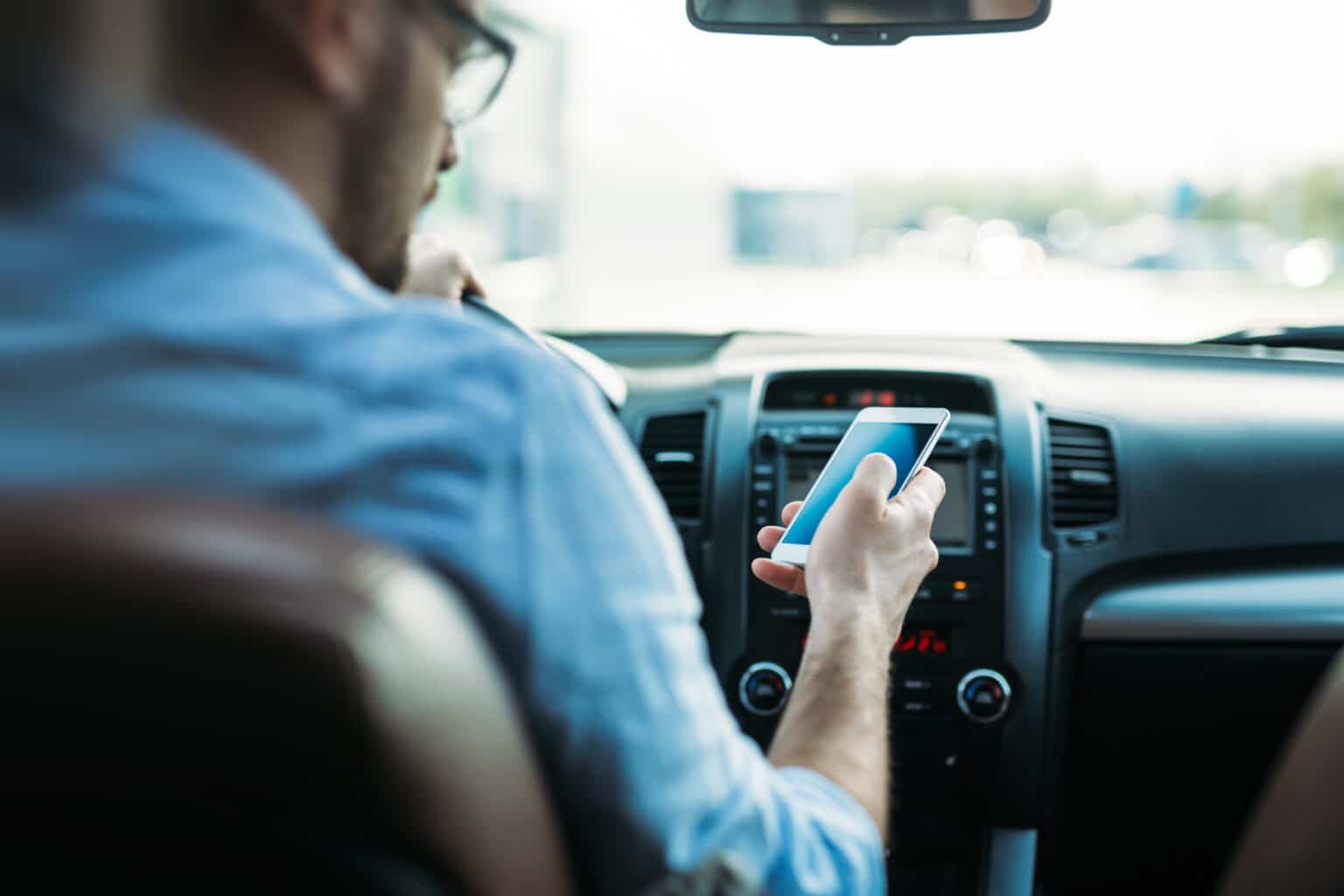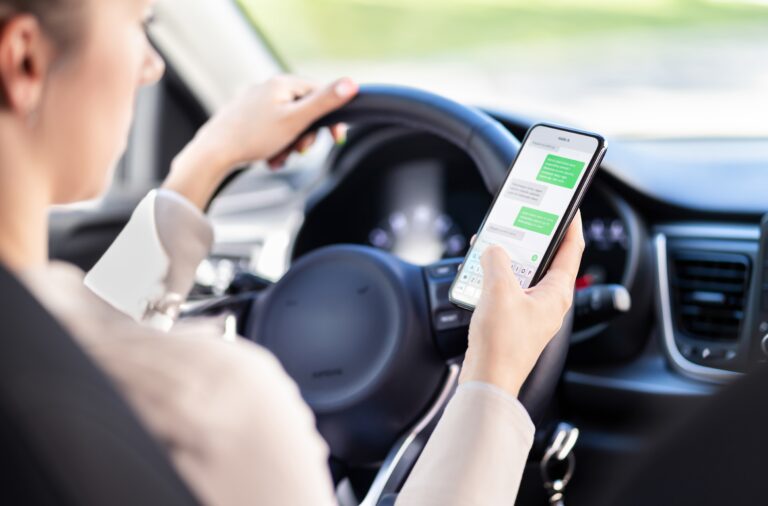Did you know that at any given moment, 10% of drivers aren’t fully focused on the road?
In 2021, distracted driving led to 3,522 fatalities in traffic crashes — that’s 10 deaths every day. That same year, an estimated 362,415 individuals suffered injuries in crashes involving distracted driving.
Here are some common reasons people get distracted behind the wheel and how you can help prevent fatal crashes.
What is distracted driving?
Distracted driving encompasses any activity that could divert a person’s attention away from the act of driving.
Taking your hands off the wheel or briefly taking your eyes off the road—even for a few seconds—will impair your ability to assess your surroundings, delay your reaction time, and undermine your ability to steer clear of and react to sudden road obstacles.
How does texting while driving compare to intoxicated driving?
With everyone glued to their smartphones these days, it’s common for the driver at fault for a crash to be texting or scrolling on their phone. In fact, individuals who text and drive are 23 times more likely to be involved in a car crash.
Using your phone while driving diverts your attention from the road, removes your hands from the wheel, and distracts your mind from driving. That’s why texting and driving is just as dangerous as driving under the influence. Using a cell phone can delay your reaction time as much as having a blood alcohol concentration at the legal limit of .08%.
How does phone use impact your reaction time on the road?
Cell phone use can reduce a driver’s attention by as much as 37%.
Sending or receiving a text takes a driver’s eyes from the road for an average of 4.6 seconds, the equivalent of driving the length of an entire football field blind at 55 mph.
Is it safe to use hands‐free devices while driving?
Both hands‐free and hand‐held cell phones can lead to delayed reaction times while driving. Engaging in phone conversations while operating a vehicle significantly increases your risk of missing critical visual and authority cues needed to avoid a crash.
We strongly recommend you refrain from talking on the phone altogether while driving, no matter what device you have.
What other types of distractions should you avoid while driving?
While cell phones are a common distraction while driving, many other types of distractions can be equally risky, including:
- Interacting with other passengers in your vehicle
- Eating or drinking while driving
- Grooming or applying makeup
- Checking your GPS device or navigation systems
- Adjusting your car’s radio or air conditioner
- Retrieving items from your bag or wallet
- Listening to podcasts or audiobooks
- Daydreaming or being mentally preoccupied
- Glancing around instead of focusing ahead, or looking at objects outside your car
Even if you feel confident in managing certain distractions, the likelihood of a crash significantly increases when you divert your eyes, hands, or mind from driving.
Which group is most likely to use their phone while driving?
Teenage drivers are the most prone to using cell phones while driving, with over 3,000 teens losing their lives annually in crashes involving texting and driving.
Multitasking behind the wheel is becoming the life-threatening norm. While distracted driving is hazardous for all drivers, it poses an even greater risk for young drivers, especially those with limited driving experience. Plus, drivers ages 18-24 who admit to using cell phones while driving often exhibit other risky driving behaviors such as speeding, disregarding traffic signals, and making hasty maneuvers on the road.
To help manage this dangerous crash risk among teens, families must educate their teens about the dangers associated with distracted driving and emphasize the importance of staying focused while behind the wheel.
What are the Texas laws on distracted driving?
In Texas, texting while driving is prohibited statewide. Drivers are not allowed to read, write, or send electronic messages while operating a vehicle. First offenders can be fined up to $99, and subsequent offenses can potentially result in a fine of up to $200.
Additionally, some cities in Texas have banned all cell phone use while driving, and using any handheld device in a school zone is illegal. Despite these bans, crash reduction results are still inconsistent.
It’s important to note that getting caught texting or using your phone while driving can raise your insurance rate by an average of 23%.
How can you help end distracted driving?
One crucial step to combat distracted driving is to be a vigilant and focused driver. By staying alert, you can help prevent collisions that cause unintended injuries and respond effectively to potential hazards on the road.
If you’re interested in helping raise awareness about the dangers of distracted driving, check out Allie’s Way:
What is Allie’s Way?
“Allie’s Way” is a nonprofit organization founded by the parents of Allie Estelle, who tragically lost her life due to a distracted driver. Allie, just shy of her third birthday, was fatally struck by a driver using a cell phone while turning in a parking lot.
In response to this devastating event, Allie’s parents established Allie’s Way with a mission to raise awareness about the risks of distracted driving and cell phone usage behind the wheel.
To support this organization’s efforts to advocate for safer parking lots near areas frequented by children, visit Allieswaysaves.org.










